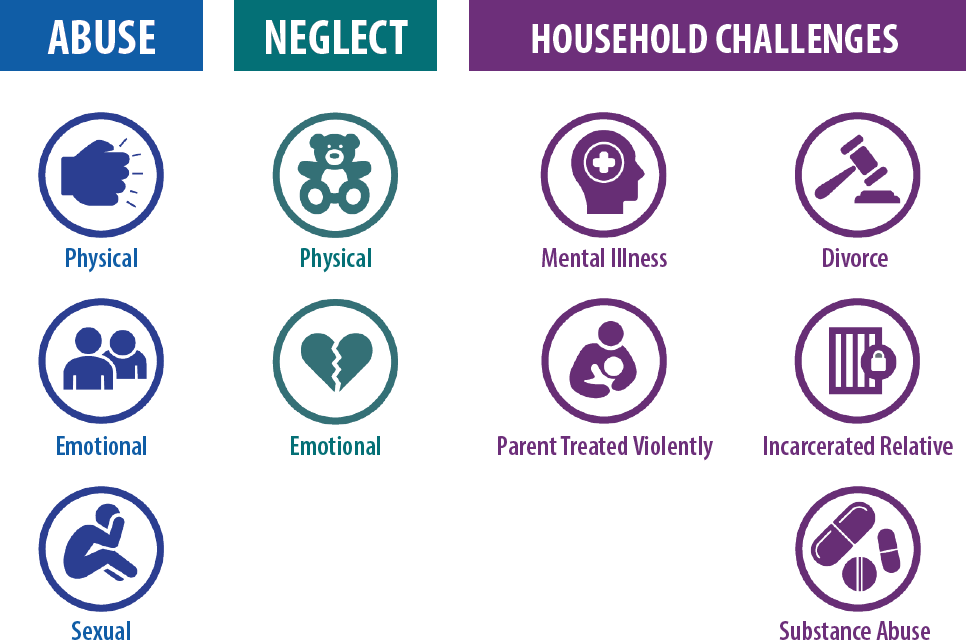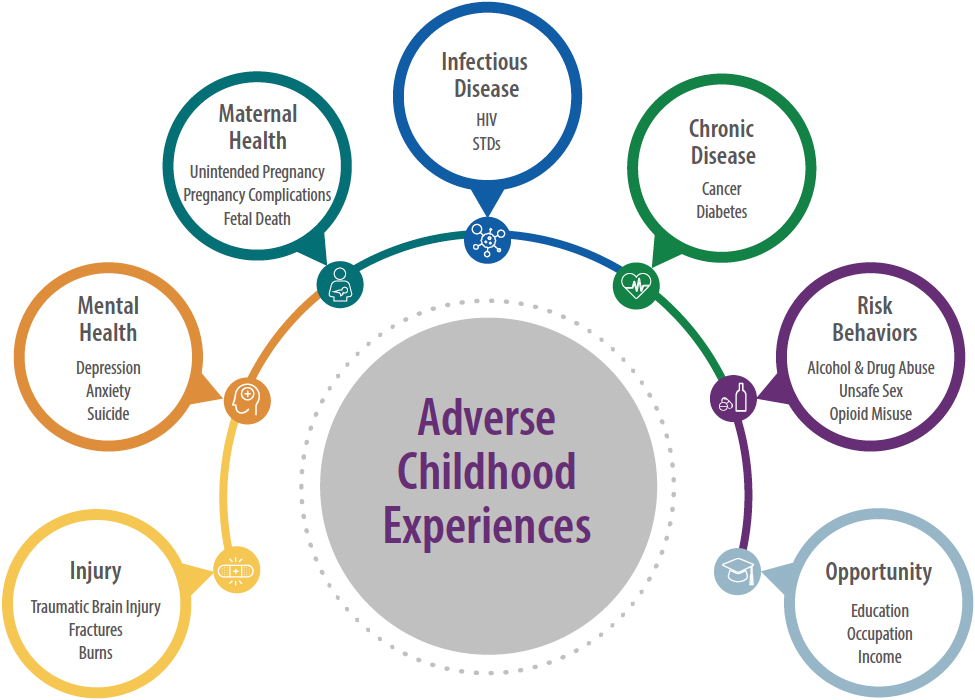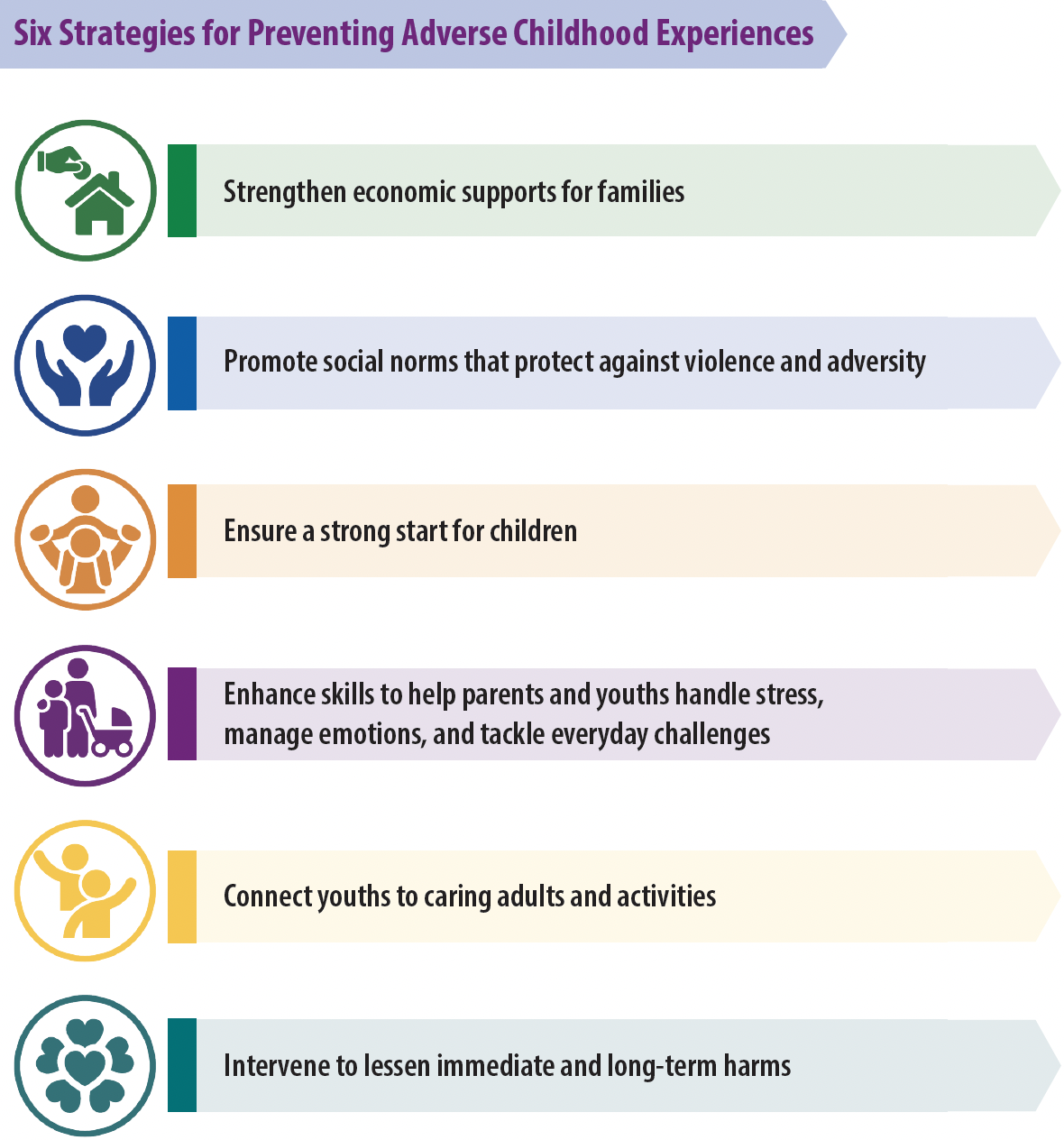Adverse childhood experiences, or ACEs, are preventable, potentially traumatic events that occur in childhood. These experiences can be caused by neglect, experiencing, or witnessing violence, or having a family member attempt suicide or die by suicide (CDC, 2021). Abuse and neglect, substance use, family members with mental health problems, parental separation or incarceration, and household violence can also undermine a child’s sense of safety, stability, and bonding (CDC, 2021).
Trauma is the result of a frightening, dangerous, or violent event that poses a threat to a child’s life or bodily integrity. Witnessing a traumatic event that threatens the life or physical security of a loved one can also be traumatic. This is particularly important for young children as their sense of safety depends on the perceived safety of their parents of caregivers (NCTSN, nd).
These experiences, and their negative impact on health over time—including the intersection of ACEs, suicide, and overdose—are interrelated and preventable. Living in under-resourced or racially segregated neighborhoods, frequently moving, being subjected to homelessness, or experiencing food insecurity can be traumatic and exacerbate the effects of other ACEs (CDC, 2021).

Source: CDC, Public Domain.
Adverse childhood experiences are common across all socioeconomic groups. Children who have been subjected to a higher number of adverse events, particularly in the absence of protective factors, are more likely to experience ongoing trauma, negative health outcomes, and increases in chronic health conditions such as obesity, diabetes, and heart disease (NYSOCSF, 2024).

Source: CDC, Public Domain.
11.1 Complex Trauma
Complex trauma describes both children’s exposure to multiple traumatic events—often of an invasive, interpersonal nature—and the wide-ranging, long-term effects of this exposure. These events, such as abuse or profound neglect, are severe and pervasive. When they occur early in life, they can disrupt many aspects of the child’s development and the formation of a sense of self. Since these events often occur with a caregiver, they interfere with the child’s ability to form a secure attachment. Many aspects of a child’s healthy physical and mental development rely on this primary source of safety and stability (NCTSN, nd).
11.2 Early Childhood Trauma
Early childhood trauma generally refers to the traumatic experiences that occur to children aged 0-6. Because an infant’s or young child's reactions may be different from those of older children, and because they may not be able to verbalize their reactions to threatening or dangerous events, many people assume that young age protects children from the impact of traumatic experiences (NCTSN, nd).
A growing body of research has documented that young children can be affected by events that threaten their safety or the safety of their parents or caregivers. These traumas can be the result of intentional violence—such as physical or sexual abuse, domestic violence, or the result of natural disasters, accidents, or war. Young children may also experience traumatic stress in response to painful medical procedures or the sudden loss of a parent or caregiver (NCTSN, nd).
11.3 Historical Trauma
Trauma due to systemic racism and discrimination, the impact of multigenerational poverty, and limited educational and economic opportunities intersect and exacerbate adverse childhood experiences (CDC, 2021). Historical power imbalances have had a profound effect on certain racial and ethnic groups: early deaths, unnecessary disabilities, and enduring injustices and inequalities (Global Health 50/50, 2020).
Structural racism is rooted in a hierarchy that privileges one race over another, influencing institutions that govern daily life, from housing policies to police profiling to incarceration (Muramatsu and Chin, 2022). Over centuries, structural racism has become entrenched, influencing the way medicine is taught and practiced as well as the functioning of healthcare organizations (Geneviève et al., 2020).
The unequal burden of COVID-19 on underserved populations has forced the medical community to reckon with uncomfortable truths about its role in perpetuating structural racism in modern society. A race-conscious conversation in medicine is evolving that acknowledges race as a social construct that creates and upholds barriers underlying health disparities (Santos, Dee, and Deville, 2021).
11.4 Offsetting ACEs and Trauma
A person’s adverse childhood experiences do not have to determine their future and can be mitigated by protective factors that offset trauma (NYSOCSF, 2024).
A comprehensive approach to preventing adverse childhood experiences focuses on primary prevention but also includes strategies to mitigate the long-term consequences of ACEs (CDC, 2021):
- Strengthen economic supports for families.
- Promote social norms that protect against violence and adversity.
- Ensure a strong start for children.
- Enhance skills to help parents and youths handle stress, manage emotions, and tackle everyday challenges.
- Connect youths to caring adults and activities.
- Intervene to lessen immediate and long-term harms.

Source: CDC, Public Domain.
